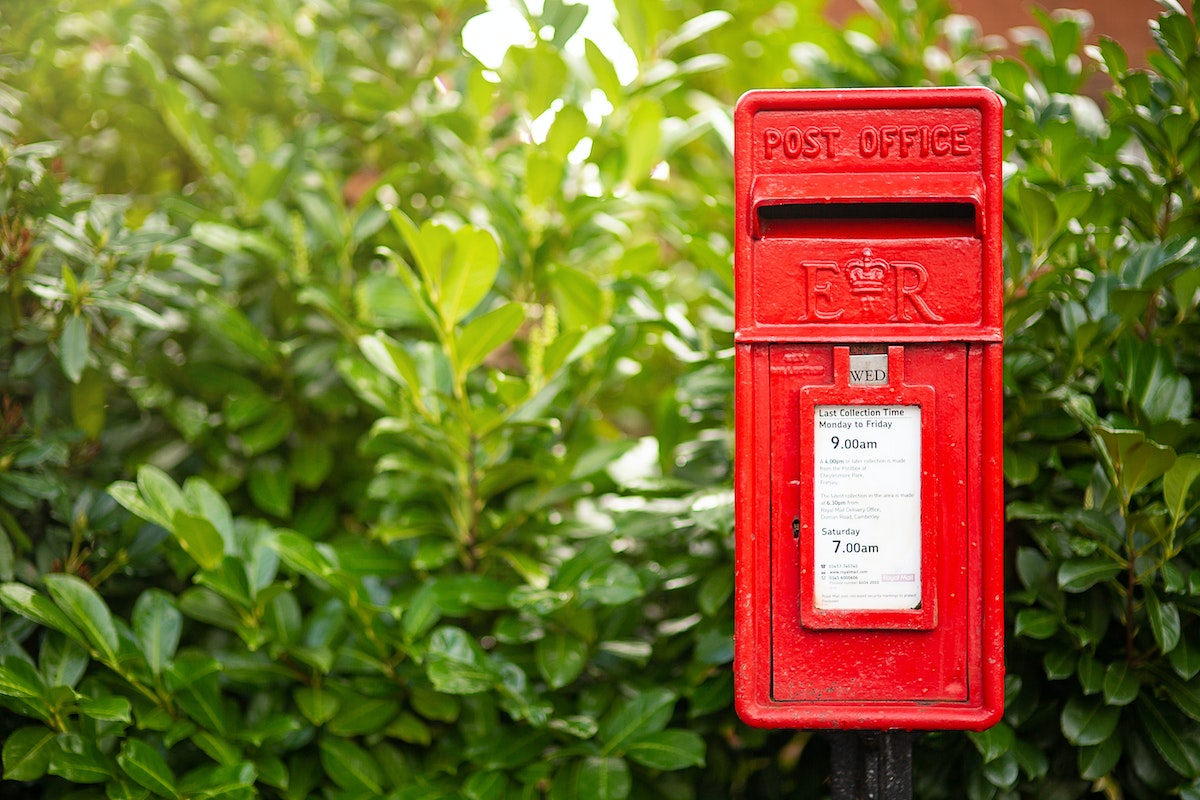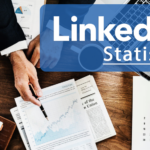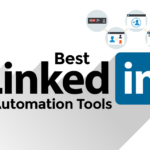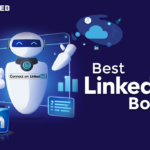Are you curious about what is InMail on LinkedIn and what it can do for you?
InMail is a premium feature that allows you to directly message another LinkedIn member that you’re not connected to.
This means you can reach out to people outside of your network, including your 2nd and 3rd connections, without having to use an introduction or connection request.
If you have a Basic (free) account, then you can only directly message your 1st-degree connections.
However, upgrading to a paid account will give you access to InMail messages and allow you to reach out to more people on the platform.
InMail messages are private and will appear in people’s LinkedIn inboxes, making it a great way to connect with potential clients or job opportunities.
So, whether you’re looking to expand your network or reach out to someone for a potential business opportunity, LinkedIn InMail can be a valuable tool to have in your arsenal.
With the ability to directly message people outside of your network, InMail can help you make meaningful connections and grow your professional presence on LinkedIn.
Post Contents
What is InMail on LinkedIn?
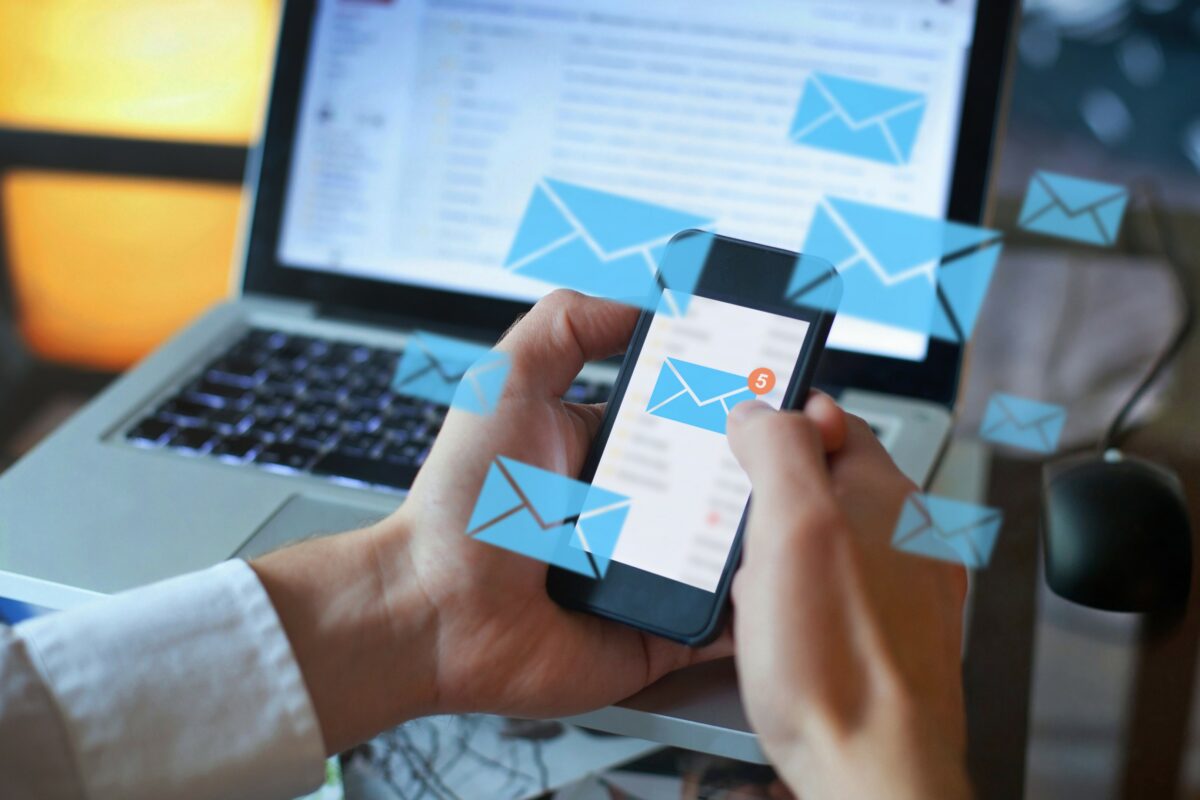
InMail is a premium feature on LinkedIn that allows you to send messages to other LinkedIn members who are not in your network.
InMail is a great way to reach out to people who you want to connect with professionally but do not have a direct connection with.
With InMail, you can send a message to anyone on LinkedIn, regardless of whether you are connected to them or not.
InMail Vs Regular Messaging
The main difference between InMail and regular messaging on LinkedIn is that InMail allows you to message people who are not in your network.
Regular messaging, on the other hand, is only available to people who are in your network.
InMail is a great way to reach out to people who you want to connect with professionally but do not have a direct connection with.
InMail Credits and Their Use
InMail credits are used to send InMail messages on LinkedIn.
InMail credits are included with LinkedIn Premium accounts, and they can also be purchased separately.
Each InMail credit allows you to send one message to a LinkedIn member who is not in your network.
If you do not receive a response to your InMail message within seven days, you will receive a credit back to your account.
InMail and LinkedIn Premium
InMail is included with LinkedIn Premium accounts.
LinkedIn Premium accounts come in different levels, and the number of InMail credits you receive depends on the level of your account.
InMail is a great way to reach out to people who you want to connect with professionally but do not have a direct connection with.
Benefits of Using InMail
If you’re looking to connect with professionals outside of your network, LinkedIn InMail is a powerful tool that can help you establish valuable connections and generate leads.
Here are some of the key benefits of using InMail on LinkedIn:
Direct Connection with Professionals
InMail allows you to reach out to professionals who are not part of your network.
This means that you can connect with people who may be relevant to your industry or business, but who you may not have access to through your existing connections.
InMail also allows you to bypass gatekeepers and reach decision-makers directly, which can be particularly valuable for sales and business development professionals.
Better Response Rates
LinkedIn InMail messages have been shown to have higher response rates than traditional email messages.
This is likely due to the fact that LinkedIn users are more likely to open and respond to messages from other LinkedIn users than they are to messages from unknown email addresses.
Additionally, InMail messages are sent directly to the recipient’s LinkedIn inbox, which can increase the likelihood that they will see and respond to your message.
Personalized Messaging
InMail allows you to personalize your messages to each recipient, which can help you establish a more meaningful connection.
By referencing the recipient’s profile or mentioning mutual connections, you can demonstrate that you have taken the time to research and understand their background and interests.
This can help you stand out from other LinkedIn users who may be sending generic messages to a large number of recipients.
How to Use InMail Effectively

If you’re using LinkedIn to connect with potential clients, partners, or employers, InMail can be a powerful tool to help you reach out to people who aren’t in your network.
However, crafting the perfect message can be a challenge.
Here are some tips to help you use InMail effectively.
Crafting the Perfect Subject Line
Your subject line is the first thing your recipient will see, so it’s important to make it count.
Here are some tips for crafting a subject line that will get noticed:
- Keep it short and sweet. Your subject line should be no more than 10 words.
- Be specific. Let your recipient know why you’re reaching out and what you want to talk about.
- Use keywords. Use keywords that are relevant to your recipient’s interests or industry.
- Personalize it. If you can, include your recipient’s name in the subject line.
Writing a Compelling Message
Once you’ve crafted the perfect subject line, it’s time to write your message.
Here are some tips for writing a compelling InMail message:
- Keep it short and to the point. Your message should be no more than 300 words.
- Be friendly and personable. Use a conversational tone and avoid sounding too formal or stiff.
- Show that you’ve done your research. Mention something you admire about your recipient or their company.
- Explain why you’re reaching out. Let your recipient know why you think you could benefit from working together.
- Offer something of value. Whether it’s a resource, a piece of advice, or a connection, offer something that your recipient will find valuable.
Including a Call to Action
Finally, it’s important to include a call to action in your InMail message.
Here are some tips for crafting a compelling call to action:
- Be specific. Let your recipient know exactly what you want them to do.
- Make it easy. Provide clear instructions and any necessary links or contact information.
- Be polite. Thank your recipient for their time and consideration.
By following these tips, you can use InMail to connect with potential clients, partners, or employers and start building valuable relationships.
InMail for Sales and Marketing
If you are a sales professional or marketer looking to expand your reach on LinkedIn, InMail can be a powerful tool.
InMail allows you to send direct messages to LinkedIn members that you are not connected with.
Here are some ways you can use InMail to generate leads and improve your digital marketing efforts.
Using InMail for Lead Generation
InMail can be a great way to reach out to potential leads and start a conversation.
Here are some tips for using InMail for lead generation:
- Personalize your message: Make sure to address the recipient by name and mention something specific about their profile or company to show that you have done your research.
- Be clear and concise: Keep your message short and to the point. Explain why you are reaching out and what you can offer.
- Follow up: If you don’t hear back from the recipient, don’t be afraid to send a follow-up message. Sometimes it takes a few tries to get a response.
InMail in Digital Marketing
In addition to lead generation, InMail can also be a powerful tool for digital marketing.
Here are some ways you can use InMail in your marketing campaigns:
- Target your audience: Use LinkedIn’s targeting options to send InMail messages to specific groups of people based on factors like job title, industry, and location.
- Offer something of value: Instead of simply promoting your products or services, offer something of value to the recipient, such as a free trial or consultation.
- Test and optimize: As with any marketing campaign, it’s important to test and optimize your InMail messages to see what works best.
Sponsored InMail for Businesses
If you are a business looking to reach a larger audience on LinkedIn, you may want to consider using Sponsored InMail.
Sponsored InMail allows you to send personalized messages to a targeted audience of LinkedIn members.
Here are some tips for using Sponsored InMail effectively:
- Have a clear call to action: Make sure your message includes a clear call to action, such as signing up for a webinar or downloading a whitepaper.
- Use engaging visuals: Include visuals like images or videos to make your message more engaging.
- Measure your results: Use LinkedIn’s analytics tools to track the performance of your Sponsored InMail campaigns and make adjustments as needed.
InMail can be a valuable tool for sales professionals and marketers looking to expand their reach on LinkedIn.
Whether you are using InMail for lead generation or digital marketing, it’s important to personalize your messages, be clear and concise, and test and optimize your campaigns.
If you are a business looking to reach a larger audience, consider using Sponsored InMail to send personalized messages to a targeted audience of LinkedIn members.
Premium Plans and Pricing

If you’re looking to take advantage of LinkedIn’s Premium features, you’ll need to sign up for a Premium account.
There are several Premium plans available, each with different features and pricing.
Premium Plans
LinkedIn offers four Premium plans: Premium Career, Premium Business, Sales Navigator Professional, and Recruiter Lite.
Each plan comes with different features and benefits, so it’s important to choose the one that’s right for you.
Premium Career is designed for job seekers and includes features like access to salary insights, the ability to see who’s viewed your profile, and 15 InMail credits per month.
Premium Business is geared toward business professionals and includes features like unlimited people browsing, advanced search filters, and 20 InMail credits per month.
Sales Navigator Professional is designed for sales professionals and includes features like lead recommendations, account and lead alerts, and 20 InMail credits per month.
Recruiter Lite is designed for recruiters and includes features like advanced search filters, the ability to see who’s viewed your job postings, and 30 InMail credits per month.
Pricing
The cost of a LinkedIn Premium account varies depending on the plan you choose.
Premium Career costs $29.99 per month, Premium Business costs $47.99 per month, Sales Navigator Professional costs $79.99 per month, and Recruiter Lite costs $119.95 per month.
In addition to the monthly subscription fee, you may also need to purchase additional InMail credits if you run out.
The cost of InMail credits varies depending on the plan you have, but generally ranges from $10 to $12 per credit.
If you’re on a budget, it’s worth noting that LinkedIn offers a free trial of Premium for one month.
This can be a great way to test out the features and see if they’re worth the investment.
Privacy and User Settings
When it comes to messaging on LinkedIn, privacy is key.
LinkedIn allows you to control your privacy settings and manage your account settings to ensure that you are in control of your information.
To access your LinkedIn privacy settings, click on your profile picture and select “Settings & Privacy.”
From there, you can manage your account settings, update your privacy and security settings, and set your preferences for how you want to be seen and contacted on the platform.
One of the most important privacy features on LinkedIn is the ability to block other users.
If you receive unwanted messages or spam, you can easily block the sender to prevent them from contacting you again.
To block someone, simply go to their profile, click on the three dots on the top right corner, and select “Block or report.”
Another important feature is the ability to manage your email notifications.
LinkedIn allows you to choose which email notifications you want to receive, so you can stay up-to-date on important messages without being overwhelmed by unnecessary emails.
In addition, LinkedIn offers a premium feature called InMail, which allows you to directly message another LinkedIn member that you’re not connected to.
With InMail, you can reach out to anyone and everyone on the platform, even if they don’t have a premium account.
However, keep in mind that InMails are limited, so use them wisely.
InMail Analytics and Effectiveness
If you want to know how well your InMails are performing, LinkedIn offers InMail Analytics that can provide you with insights into the effectiveness of your outreach efforts.
In this section, we will cover how to understand response rates, InMail open rates, and how to measure InMail effectiveness.
Understanding Response Rates
Response rate is a metric that measures the percentage of InMails that receive a response.
To calculate response rate, divide the number of responses by the number of InMails sent, then multiply by 100.
A response rate of 10% or higher is considered good.
To improve your response rate, make sure your InMail is personalized, concise, and relevant to the recipient. Also, consider the time of day and week you send your InMail.
For example, sending an InMail on Monday morning may result in a higher response rate than sending it on Friday afternoon.
InMail Open Rates
InMail open rate is the percentage of InMails that are opened by the recipient.
To calculate open rate, divide the number of InMails opened by the number of InMails sent, then multiply by 100. A good open rate is around 50%.
To improve your InMail open rate, make sure your subject line is clear, concise, and attention-grabbing.
Also, consider the time of day and week you send your InMail.
For example, sending an InMail on Tuesday or Wednesday morning may result in a higher open rate than sending it on Monday or Friday.
Measuring InMail Effectiveness
Measuring InMail effectiveness involves tracking metrics such as response rate, open rate, and clickthrough rate.
Clickthrough rate measures the percentage of recipients who clicked on a link in your InMail.
To improve your InMail effectiveness, track your metrics and adjust your outreach strategy accordingly.
For example, if your response rate is low, try personalizing your InMail or sending it at a different time of day.
If your clickthrough rate is low, consider changing the content of your InMail or the call-to-action.
InMail Analytics can provide valuable insights into the effectiveness of your outreach efforts.
By tracking your metrics and making adjustments, you can improve your response rate, open rate, and overall InMail effectiveness.
Key Takeaways
If you’re looking to use LinkedIn InMail to connect with other professionals, there are a few key takeaways to keep in mind.
First, it’s important to understand the difference between InMail and regular messages on LinkedIn.
InMail allows you to reach out to people outside of your network, while regular messages are limited to your connections.
InMail also comes with a cost, so it’s important to use it strategically.
When crafting your InMail message, it’s essential to be clear and concise.
Keep in mind that the recipient likely receives many messages, so you want to make sure yours stands out. Be sure to personalize your message and explain why you’re reaching out.
Another important aspect of InMail is the subject line.
Your subject line should be attention-grabbing and relevant to the recipient.
Avoid generic subject lines like “Hello” or “Networking Opportunity.”
Finally, it’s important to be respectful of the recipient’s time.
Keep your message brief and to the point, and avoid making exaggerated or false claims.
Remember, the goal is to start a conversation, not to make a sale right away.
LinkedIn InMail can be a valuable tool for connecting with other professionals, but it’s important to use it strategically and respectfully.
Keep these key takeaways in mind, and you’ll be well on your way to building meaningful connections on LinkedIn.







